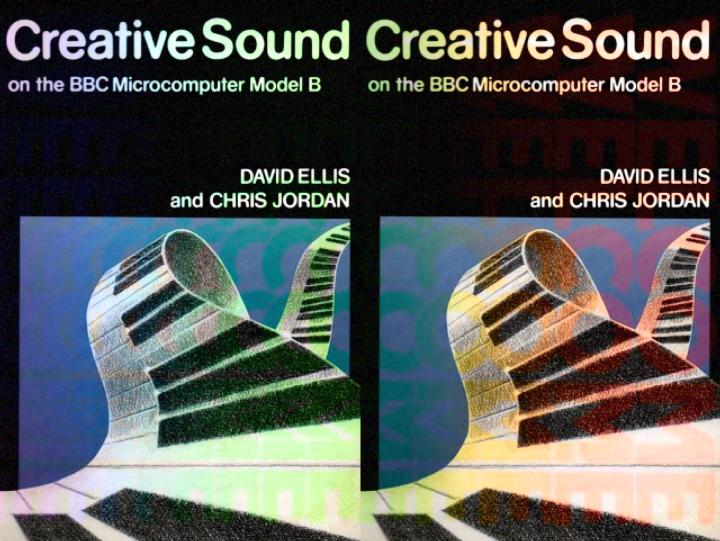Computer Music Chronicles, The 80's: Acorn Music 500 Synthesizer
US Older Music Machines & the People Who Still Use Them 16/02/24

|
You know, some musical devices defy categorisation; they're boxes that do not like to be put in a box. This is never more apparent than in the world of computer music, where the lines between "soundchip" & "synthesizer" are blurry.
Generally speaking, in the very early 80's a soundchip (aka programmable sound generator) might output:
- Square waves (nearly all of them do this)
- Triangle waves (the NES has a legendary one)
- Digitally clocked noise (think Atari explosions!)
- Digital single-cycle waveforms
- PCM samples (by playing short pulses in fast succession)
Sometimes an extra feature; like the General Instrument AY-3-8910's fast loopable envelope, could add to the variety of tones through audio rate amplitude modulation. Filtering was usually not available, the outlier here being MOS technology's SID chip - which was for all intents & purposes, a full hybrid subtractive synthesizer with 3 oscillators, a multimode filter, ringmod & sync!
The waters muddy further when we bring Yamaha's YM chips into the equation; fully polyphonic FM synthesis IC's that powered computers AND keyboard synthesizers alike, phew!
Still in 1984, computer soundchips were generally limited in both polyphony & sonic versatility. They didn't really compete, in quantity or quality, with professional synthesizers of a digital or hybrid nature. That's not to say that they weren't fun to experiment with, though!

David Ellis & Chris Jordan wrote the above book in 1985. According to Acorn User Magazine, it was "an excellent starting point" for those looking to experiment with computer sound. "It includes sequencer & synthesizer programs, phase music, and perhaps most impressively, a music compiler. The examples provided show just what can be done with a lone BBC micro."
Acorn's BBC micro was doing well at the time. The company had beaten a number of rivals (including Sinclair!) to become the British Broadcast Corporation's official machine. What's more, it would be linked to the network's "Computer Programme" and used to showcase programming, graphics, external hardware interfacing and educational titles.
Education, after all, was an area where the Beeb excelled; my first computing experience was with a BBC Micro. In 1988 (middle infants!) I have vivid memories of playing colourful adventures like Granny's Garden and The Flowers of Crystal.
Back to music. As impressive as "lone" Beeb music is (see the demo above!), Ellis & Jordan weren't done yet. Their next venture was creating the Music 500. This is a small black & beige metal box - around the size of a disk drive, and connects to the BBC model B via the 1Mhz bus.
The hardware is impressive, rivaling contemporary digital synths:
- 8 pairs of digital oscillators, max sample rate: 46.875Khz per channel(!)
- 128-sample waveforms can be defined for each oscillator
- ASDR envelope for each channel
- Oscillators can AM/FM or Sync with each other(!)
- Pseudo-random digital noise available
Sounds great, right? Especially at £200 in 1986! However, there was a catch. There wasn't a trace of a user interface - all musical elements, notes, rhythms & sound data were coded by hand using a programming language called AMPLE. Maybe it wasn't "so much" of a catch at the time; in those days people would legit type in pages of data from magazines, but nowadays, does anyone have the patience to do this?
I've just received a unit, so I'll have to let you know!
Personally, I think the unit has bags of character. Here's an arrangement of a popular Pet Shop Boy's hit; note the quaint, synthetic percussion:
The system has been successfully emulated (in software, then FPGA) and later cloned (https://stardot.org.uk/forums/viewtopic.php?t=16895) so there must be some appeal. Later additions to the Music range included the Music 5000 - similar hardware, but with a brand new user interface - the Music 4000 Keyboard & Music 2000 MIDI interface.
Our own Gaz Williams remembered upgrading to the 5000 software:
It's such a huge update. Going from essentially a BASIC style programming interface to a GUI based one. I wish I still had all my files with my tracks. I spent hours on those tunes.
My mind was utterly blown by the creative options of having an 8 voice synth that I could deeply control with my computer. This happened for me in 1987 and was my first step into the music tech sphere. Being able to essentially multi track record changed my life!
Anyhow, I'm off to look at BBC Model B's on eBay, see you next time! Paulee.
Posted by MagicalSynthAdventure an expert in synthesis technology from last Century and Amiga enthusiast.
< More From: MISCELLANEOUS
- 5 Ingenious Ways Synth-makers Saved Memory 26-Apr-24
- 3 of the Synth World's Most Outrageous Easter Eggs! 23-Apr-24
- 5 Firmware Updates that Totally Changed the Game 09-Apr-24
- Computer Music Chronicles: The 90's pt.3 18-Jan-24
- Computer Music Chronicles: The 90's pt.2 15-Jan-24
Even more news...







